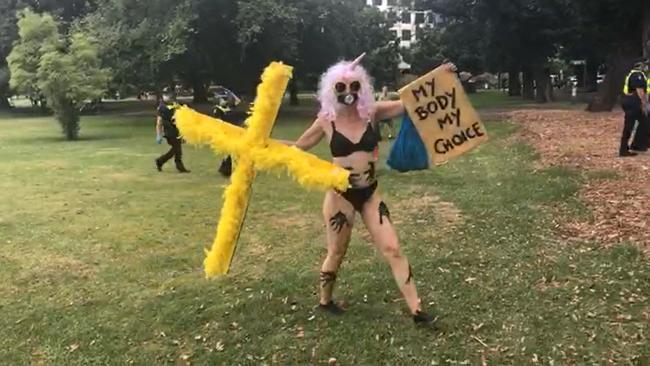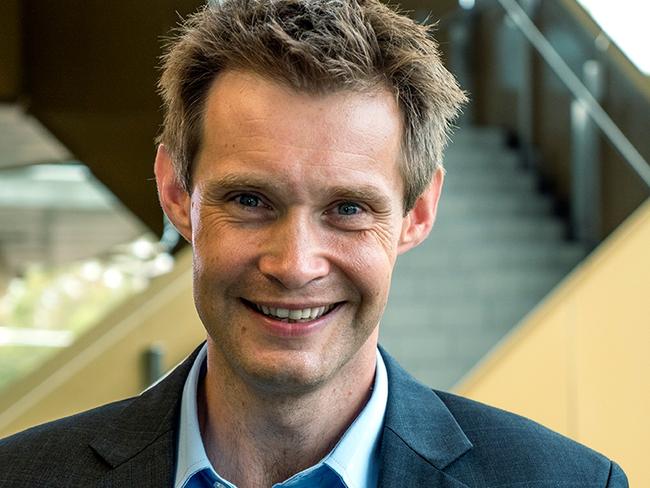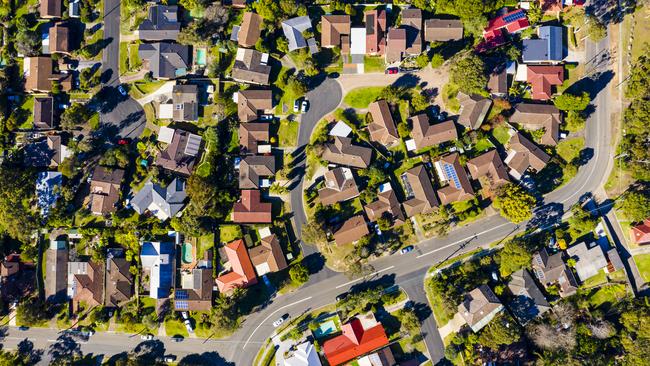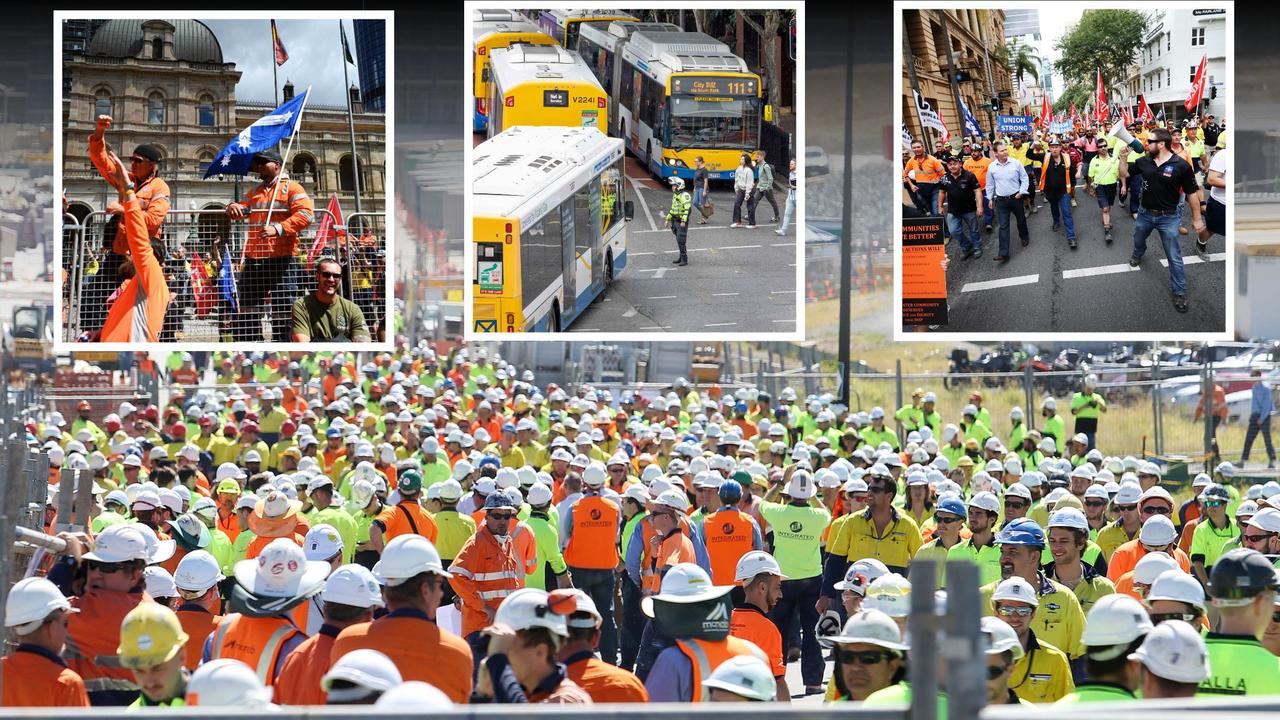Ann Wason Moore: Olympics to deliver fast train to Coast
It makes perfect sense, and unlike the light rail, it's not even controversial. And a new development means a fast train system could be coming to the Gold Coast sooner than you think, writes Ann Wason Moore.
Gold Coast
Don't miss out on the headlines from Gold Coast. Followed categories will be added to My News.
And the winner of the 2032 Olympics is … public transportation!
While it might not yet be a done deal, it seems that Southeast Queensland is on the fast-track to be named host of the world’s greatest sporting event … and it’s set to be a gold rush for our region’s rail links.
Top of the list is the holy grail of rail … a fast train connecting the Gold Coast, Brisbane, Sunshine Coast and Toowoomba.
Seriously, skip the emotional sporting montage … come 2032, if Channel 7 can broadcast a slow-mo edit of this infrastructure construction I would be weeping - tears of joy.
Because this train has been a long time coming.
It makes such absolute sense, I cannot understand why we have waited so long. And unlike every other improvement to public transportation - looking at you, light rail - It’s not even controversial.
In fact, a report by the Australasian Railway Association found that 75 per cent of Gold Coast and 68 per cent of Sunshine Coast residents would ditch the car for a faster train.
Because, and here is where it gets tricky for our light rail haters, people love trains.
That’s not my opinion, it’s a fact backed up by multiple studies from Europe to America to Australia.According to European research, almost all daily transit users preferred train travel. “Younger people showed a particularly strong preference for rail. And the preference for train travel increased with education, but not income,” states the study.
Down at Sydney University, it’s different research but the same result - people don’t like buses anywhere near as much as they like trains and light rail.According to that study, the reasons for this are multiple: buses are slow, uncomfortable (both on-board and at the ironically named ‘shelters’), inconvenient, unpredictable, schedules are all but illegible and bus travel is socially stigmatised. That last factor is harsh, but as the apocryphal Margaret Thatcher quote states: “A man who, beyond the age of 26, finds himself on a bus can count himself as a failure.”

Now, not all of these criticisms are legitimate - express buses in a dedicated bus lane can be quite speedy, after all - but it really doesn’t matter, because it all comes down to perception.
If you thinks buses are slow and confusing, you’ll drive your own car.And that’s exactly what’s happening in our city.
The truth is that I can get on-board with some of the concerns from the anti-LR faction - of course over-development is not optimal for our city, although to link that solely to light rail seems overly simplistic to me. But I’m always derailed when I read yet another person explain that light rail is not necessary because we already have buses and they’re always empty.
Great argument, Einstein.
The reason buses are empty is because people hate buses … so they drive their cars instead, which is why we have crazy traffic, which is why we need better public transportation - like light rail.
After all, the buses that travel between the Gold Coast, Brisbane, Sunshine Coast and Toowoomba are also unpopular … so does that mean we don’t need fast rail?
Of course not. Successful rail systems can define a city, just look at New York’s subway … and I don’t see any fast food franchises named after the NYC bus system.
A city simply cannot reach the next level without proper public transportation - and that includes a mix of buses and trains, whether you love them or hate them.
To have a citywide network linked into a greater regional system would see all of southeast Queensland benefit - we would truly be setting the gold medal-standard.
So will this finally win over our city’s light rail haters? Ha ha ha ha ha ha. No.But you know what? Let’s just ride on without them. We have an Olympics to host.
MICROCHIPS AND COW DUNG: WILD THEORIES OF OUR FACEBOOK 'FRIENDS’
Some people just don’t like facts.
And unfortunately these are now the “friends” you’ll find on Facebook – where, despite promises to minimise misinformation, the only thing successfully trashed is the truth.
Witness the anti-vaxxer protests held around the country this very weekend – protests co-ordinated through Facebook itself.
Yet thanks to Mr Mark Zuckerberg, mainstream media was not even allowed to share the facts about these protests on the very platform where they were conspired.
And the reality is that these demonstrators’ demands makes for some unbelievable reading.
But don’t worry, this is a real newspaper with a real journalist at the keyboard – the truth is literally in black and white.

So, you may wonder, what were the Pete Evans-corona-hoax crowd protesting at the weekend? Was it that vaccine vials contain Microsoft microchips made to track our every move? Or that the pandemic was created by big pharma purely for profit? Or that cow dung is the miracle COVID cure we’ve been waiting for?
FYI, I did not make these up. Each are actual conspiracies that are going viral on, you guessed it, Facebook. (Although I have to give props to the poop plot, at least they’re not even trying to hide the fact they are peddling pure bullshit.)
But no, the point of the protests held in 11 cities around Australia, the protests where 20 people were arrested (including the accidental arrest of a journalist and photographer) was simple … and simply ridiculous.
The title says it all: Millions March Against Mandatory COVID Vaccinations.
If only mainstream media could have tagged those “millions” (aka NOT millions) in a post to let them know that, actually guys, the COVID vaccine isn’t mandatory anyway.
That’s right. It’s totally your choice to decide which is the more clear and present danger: side effects that are the stuff of nightmares (ie not real), or a global pandemic whose proof is in the devastating body count.
All that marching and all those signs to prove a pointless point … what a waste.
But good effort.
Besides, being anti-vaxxers it wouldn’t have mattered how many times we told them the truth … they’re immune to facts.

It would be hilarious if it weren’t so serious.
Because right now, all of the hysteria and fear that’s constantly swirling around social media is being allowed to run rampant. And it seems that once you’re radicalised, there’s no going back to the land of truth and reason.
Every day that conspiracies are able to flourish unanswered is a shot to the heart of our nation’s ability to reach herd immunity … and get back to business with the world.
It’s just so hypocritical that Facebook allows these anti-vaxxer protesters to share all of their invalid, inaccurate beliefs on the quasi-public national noticeboard that is its platform, and yet not one media institution can fact-check their fallacies.
So I had to laugh – or I’d cry – when I heard that Facebook yesterday adopted a new voluntary code to help prevent the spread of disinformation and misinformation.
Lobby group DIGI, which represents Facebook, Google and other online platforms like Twitter, said yesterday that its members had agreed to adopt the industry-wide code of practice, which will be overseen by the media regulator, the Australian Communications and Media Authority.
Under the voluntary code, the companies will target paid content, fake bots and accounts that spread misinformation, as well as political advertising by requiring platforms to help Australians understand the source of content they see online.
“In this code, we’ve worked to get the balance right with what we think people expect when communicating over the internet. Companies are committing to robust safeguards against harmful misinformation and disinformation that also protect privacy, freedom of expression and political communication,” says DIGI managing director Sunita Bose.
Then she added that the tech platforms may also prioritise credible and trusted news sources that are subject to a published editorial code … you know, like all the ones that have been banned by Facebook.
The reality is that if you want the facts, just come to traditional media.
The idea that tech companies are devoted to the pursuit of objective truth is, like so much of its content, fake news.
My dirty little property secret
I never thought I’d say this.
As a long-time hardcore lover of property porn, real estate is becoming an extreme turn-off.
Dwellings with that irresistible house-next-door charm that once tempted me with their attainability now taunt me as they scamper just out of financial reach.
They’re nothing but a brick tease.
But I shouldn’t be surprised. After all, we’ve been bracing for this Covid-backed boom since the first viral cough spluttered upon our shores.
And now, the surge is upon us. Planning experts are warning regions popular with pandemic refugees, like the Gold Coast, are facing impacts akin to a major resources boom as settlers push up house prices and rents.
FULL DIGITAL ACCESS: JUST $1 FOR FIRST 28 DAYS
But, unlike the traditional mining boom, Griffith University lecturer and urban planner Tony Matthews says this period is unlikely to be followed by a slowdown or bust.
Instead, he says the new arrivals are able to work remotely, bringing with them highly-paid roles from major centres.
Now, that’s great if you have a spare property or two to sell to these southerners. But even if you don’t, the growth of our city’s numbers will inevitably bring more funding for infrastructure and give us more clout for future demands.

MORE NEWS
Michael Edward Clarke charged with ‘stalking’ children at Robina Town Centre
Michael Edward Clarke charged with ‘stalking’ children at Robina Town Centre
That’s all great … but I’m more than a little worried.
I’m not the first to voice concern about locals being priced out of their own suburbs … Mr Matthews fears the same, hearkening back to the example set in mining boom towns.
But, beyond that, how are we going to turn these new arrivals into true Gold Coasters? Especially when they’re bringing their jobs with them.
Love them or loathe them, workmates are one of the few sure sources of socialisation for adults. Kids have school friends, we have office buds. Even the most annoying associate can still provide some solid tips when it comes to getting to know a new town.
Without that office atmosphere, adults can be at a loss to find new friends. Even parents can struggle once their kids hit high school, suddenly hanging out by the playground is just creepy.
The truth is that the Gold Coast can be a hard place to meet new people if you’re older and not in the office.
Just ask my mother.
When we moved here I quickly acclimatised with my fellow Year 9 students, but my parents only had each other.
Sure, my father’s family was here but they had their own lives … for my parents, both already retired, there was nowhere to meet new people.
Actually, Mum did meet a lot of nurses once Dad was sick – but that’s not really what she had in mind. Ultimately, once Dad died, Mum moved back to her old home town of Adelaide – after seven years here she had forged no ties to the Coast.
So when she moved back here a few years ago, she did so with purpose. At the age of 80, she volunteers at a charity shop, plays club croquet, is studying both Italian and guitar and sings in a choir.

Somehow I just can’t see someone with a full-time online job making the same effort as Mum – and I worry that our city will be the poorer for it.
And again, the lessons are there from our own Queensland boom towns.
Mackay Mayor Greg Williamson told the ABC that a 10-year boom in Central Queensland, which ended in 2013, has had a lasting impact and warned that our region must focus on keeping the community united.
“Bring the newcomers into your community and make them part of your community, so they don’t feel like interlopers and the existing community doesn’t feel like they’re interlopers as well,” he said.
With so many new arrivals headed our way, we need to enhance our hospitality skills – lest the chemistry that makes our community great is diluted.
If you see a new neighbour, make an effort to meet and greet them. You never know how it might benefit you. Take the Mackay mayor’s word for it:
“So many people came to (our) town, brought a lot more money to town, and a lot more different ideas to town — and that’s a good thing.”
Even better, go ask your new neighbour how much they paid for their house … and if they’re thinking about selling.
I can’t help it, sometimes I just like to tease myself. Besides, what better way to break the ice than a little property foreplay?
DOCTOR’S VITAL VACCINE MESSAGE
When it comes to the issue of apathy, I can’t really be bothered.
And that’s precisely why I’m part of the problem.
While much of the world falters beneath the deadly weight of the pandemic, here in Australia — and especially the Gold Coast — we’re sitting pretty.
So when it comes to the rollout of vaccines in coming months, I have to admit my attitude is a bit indifferent.
Let’s be clear, I’m a virulent pro-vaxxer. All my life I’ve happily rolled up my sleeve to cop a needle for dozens of diseases that pose practically no threat to my own life. Because it’s not about me but the herd — I’m just one brick in the wall that defends the safety of our most immunocompromised citizens.

Yet while I wholeheartedly support the COVID jab in principal, I doubt I’ll be first in line at the GP when it comes to practice.
It’s not that I believe in any ridiculous conspiracies, it just all seems like a lot of hassle to garner protection from what is, at least here on the Gold Coast, a distant threat.
My attitude to the immunisation is not anti, it’s one of apathy.
And I’m not the only one. Because in this lucky country, our great good fortune is now proving a distinct disadvantage when it comes to rolling out vaccines to every resident.
While countries in Europe are crying out for more vials to fight the virus, our national attitude seems to be one of “whatevs”.
Perhaps that’s understandable, but our lazy response and lack of cheerleading for inoculation has created a vacuum into which is flowing a flood of unhealthy conspiracies.
And because our medical fraternity is so extremely responsible, measured and factual, they simply cannot fight back with the same hyperbolic power as the anti-vax mob.
“When it comes to considering vaccines, doctors in the UK and the US have a different challenge to those of us working in Australia,” says Dr Tash Yates, an assistant professor of general practice at Bond University and Mudgeeraba GP.
“With such high infection and death rates over there, the benefits clearly outweigh the risks (in the short term, at least).

“In Australia, however, where community spread is sporadic and only small numbers affected, the way forward is not so clear.
“While we wait for data to come in about the true risks and side effects from each vaccine, there is a growing body of vaccine misinformation, largely based on case studies and theories, filling the information void. This is often spreading via social media and is packaged as factual information that is (for a variety of reasons) being ‘hidden’ from the general public.
“While it’s tempting to dismiss anti-vaccination stances as ‘misinformed’ and ‘fear-mongering’, there are a large number of genuinely concerned people who want to know the truth about what a vaccine will actually do to them and for them.
“The trouble is that GPs don’t want to fabricate confidence or overstate efficacy – that’s not what we do. So in contrast to the supposed clarity of anti-vaccination messages, our voices can sound uncertain and anaemic.

“Anyone who says with certainty that they know the risks, benefits and side effects of each vaccine is lying. But because humans have a tendency to want certainty, they will listen to voices that sound confident, even if that confidence is based on opinion rather than evidence.”
Nailed it, Dr Yates.
While my knee-jerk reaction to this problem is to become an official vaccine cheerleader, I also realise that when it comes to this conversation, more yelling is not what we need.
Instead, we need a call for calm, a call for rational decision-making, a call for factual information.
FULL DIGITAL ACCESS: JUST $1 FOR FIRST 28 DAYS
But that’s a call that can be hard to hear.
Which is why I choose to amplify the message of Dr Yates.
“COVID-19 vaccines are going to be an important part of combating the virus worldwide,” she says.
“Anyone who is telling you that they are dangerous is doing so based on their opinion and not on evidence. While they may truly believe it, it’s possible to be truly wrong.
“Please don’t close your minds off to vaccines until we have more evidence.”
It turns out the cure for my apathy is to fight for facts. And I’m prepared to roll up my sleeves and take a jab at harmful conspiracies … and, once that vaccine is available, a jab in the arm.



